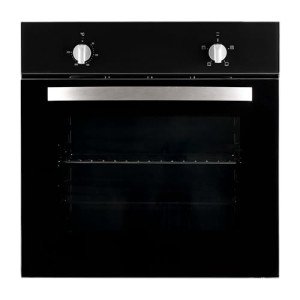single-ovens-electric2650
single-ovens-electric2650
20 Questions You Should Always To Ask About Single Oven Before You Buy Single Oven
The Ultimate Guide to Single Ovens: Features, Benefits, and FAQs
When it pertains to modern kitchen appliances, the single oven stands apart as a flexible and vital tool for any cooking enthusiast. In today’s busy world, where convenience meets culinary craftsmanship, single ovens play an essential role in meal preparation. Understanding the functions, advantages, and kinds of single ovens can simplify the procedure of choosing the perfect home appliance for your kitchen. This detailed guide intends to supply an extensive look at single ovens, their requirements, and responses to often asked questions.
What is a Single Oven?
A single oven is a kitchen home appliance that includes one primary cooking compartment. It is created to perform various cooking functions such as baking, roasting, broiling, and more. Unlike double ovens, that include two separate cavities, single ovens take full advantage of space effectiveness, making them suitable for smaller kitchens or those who often prepare meals for a few individuals.
The Anatomy of a Single Oven
In order to value the functionality of a Buy Single Oven (speaking of) oven, comprehending its key parts is vital:
| Component | Description |
|---|---|
| Cooking Cavity | Main space where food is positioned for cooking. |
| Control board | User interface for choosing cooking modes and adjusting temperature. |
| Heating Elements | Metal coils that generate heat (frequently found at the top and bottom). |
| Oven Door | Glass panel that enables visibility into the cooking space. |
| Racks | Removable racks that accommodate numerous meals at different heights. |
Kinds Of Single Ovens
Single ovens can be found in different types based upon their heating techniques and designs. Here are some popular alternatives:
-
Conventional Ovens: Utilize gas or electrical power for a conventional cooking experience. They provide constant heat for baking and roasting.
-
Convection Ovens: Equipped with a fan that circulates hot air, resulting in faster cooking times and even heat circulation.

-
Steam Ovens: Use steam to cook food, retaining wetness and nutrients. Perfect for healthier cooking approaches.
-
Wall Ovens: Built into the wall to conserve space; they can boost kitchen aesthetics while supplying performance.
-
Microwave Ovens: While not a traditional oven, modern microwave can likewise bake and roast, using convenience for quick meal prep.
Features to Look for in a Single Oven
When acquiring a single oven, think about the following features to ensure you select an appliance that suits your cooking needs:
-
Capacity: Ensure the oven’s size accommodates your typical cooking volume. Requirement capabilities generally range from 4.5 to 6 cubic feet.
-
Temperature Range: Look for an oven that offers a broad temperature range for various cooking techniques.
-
Self-Cleaning Options: Self-cleaning modes bypass the need for harsh chemicals, making maintenance easier.

-
Smart Technology: Wi-Fi-enabled models allow remote operation and tracking through smartphone applications.
-
Interior Lighting: Bright, incandescent or LED lighting helps monitor your food without opening the door.
Average Sizes and Capacities of Single Ovens
| Type | Typical Capacity (cubic feet) | Width (inches) | Height (inches) |
|---|---|---|---|
| Standard Conventional | 5.0 – 6.0 | 30 | 28 – 30 |
| Compact/Apartment Size | 3.0 – 4.0 | 24 | 28 – 30 |
| Wall Oven | 4.5 – 5.0 | 24 – 30 | 28 – 30 |
Benefits of Using a Single Oven
Buying a single oven provides various advantages for both amateur cooks and seasoned chefs alike:
-
Space Efficiency: A single oven inhabits less area than a double oven, making it perfect for smaller sized kitchen areas.
-
Affordable: Generally less pricey compared to double ovens, both in initial purchase and energy consumption.
-
Adaptability: Capable of carrying out numerous cooking strategies, making it ideal for a range of dishes.
-
Alleviate of Use: With a smaller sized cooking area, heat circulation tends to be more efficient, simplifying the cooking procedure.
-
Maintenance: Fewer parts suggest less complexity when it concerns cleansing and repairs.
Frequently Asked Questions (FAQs)
What is the typical life expectancy of a single oven?
A single oven generally lasts in between 10 to 15 years, depending on use, upkeep, and the quality of the home appliance.
How can a single oven save energy?
Single ovens require less power than double ovens, and many models are developed with energy effectiveness in mind, lowering total energy consumption.
Can a stove change a basic oven?
Yes, a convection oven can replace a standard oven as it uses comparable cooking functions alongside faster cooking times.
Are single ovens suitable for large households?
While single ovens can accommodate a good quantity of food, bigger households might find that a double oven or an additional single oven matches their needs more efficiently.
How frequently should I clean my single oven?
It is recommended to clean your oven every three to six months, depending upon use, to keep health and efficiency, especially with models that feature self-cleaning choices.
Is installation hard for a single oven?
Most single ovens included simple setup guidelines. Nevertheless, consulting a professional is recommended for safe and proper setup, especially for gas ovens.
The single oven remains a cornerstone device in cooking areas all over the world. Its adaptability, efficiency, and space-saving style make it an attractive alternative for lots of households. Whether you are an occasional cook or a cooking aficionado, choosing the ideal single oven can considerably enhance your cooking experience. With the info shared in this guide, possible buyers can make a notified decision, guaranteeing they pick an oven that best matches their cooking needs and lifestyle.



